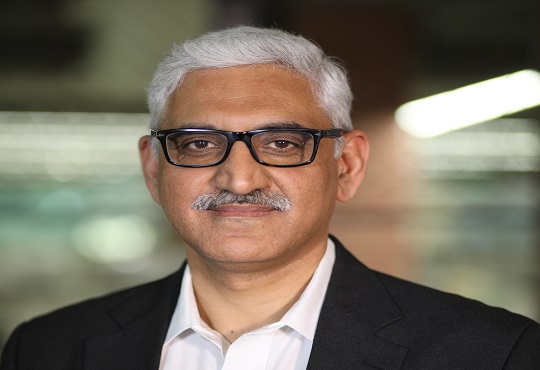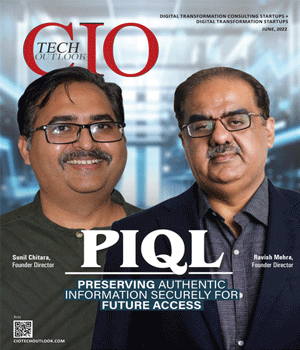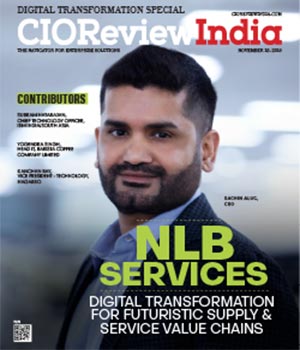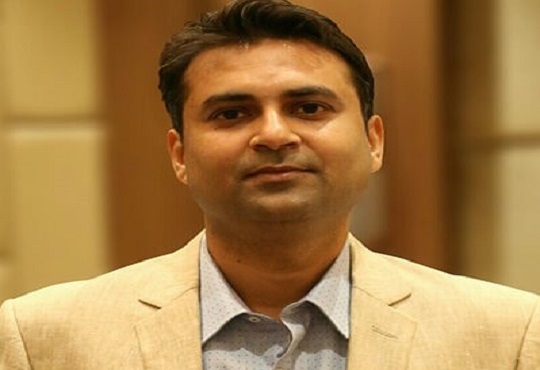
Edge Computing: The Stepping Stone to Digital Transformation
Excerpts from an interaction with Rajesh Awasthi, Associate Vice President, Managed Hosting & Cloud Services, Tata Communications | Monday, 08 June 2020, 11:03 IST

How do you see the emerging trends in the Edge Computing and their impact on the business operations?
Edge computing is steadily becoming a strategic path that is propelling digital transformation. Reports suggest that 57 per cent of mobility decision makers already have Edge computing on their roadmap for 2020. Though the concept of Edge computing is not completely novel, developments in Internet of Things (IoT) devices and data centre technology are driving a seismic shift that is moving communications and computing from a centralised cloud architecture to the Edge. Further, as the demand for data, computing, and communications grows, businesses will move resources and intelligence to the edge to ensure cost-effectiveness and enable new use cases.
Additionally, as organisations continue to evolve, edge computing would be a necessary enabler that will complement cloud computing by delivering immersive interactions, real-time value, and intelligence closer to people and things.
Considering this character of edge computing, mobile operators and service providers would play a crucial role and their networking resources will be an obvious space for edge nodes. We can also expect an explosive growth on the Edge as it obscures sensitive information to ensure privacy and security and reduce the attack surface. A well-architected Edge computing model can help businesses unlock the potential of the multitudes of untapped data to increase operational efficiency and accelerate performance by analysing data locally, as well as address network security risks, management complexities, and the limitations of latency and bandwidth.
With application areas, such as smart homes, smart cities, smart grids, smart supply chain and other IoT enabled devices, Edge computing will emerge as the global backbone for information sharing and processing across the globe.
Experts in the industry are predicting a shift towards Edge Computing from the cloud computing services. What are your thoughts on this growing popularity of Edge Computing? What are the various advantages of Edge Computing?
The global Edge computing market is stimulated by the increasing popularity of Internet of Things (IoT), rising demand for real-time and automated decision-making solutions, the need for low-latency processing, and the necessity to manage multitudes of data volumes and network traffic. According to a report, nearly 75% enterprise-generated data will be generated and processed outside the cloud by 2025.
As Edge computing pushes computing power closer to devices and the end user, it helps eliminate latency and remediates connectivity, data migration, bandwidth, and latency inefficiencies of cloud computing. This, in turn, helps automate work and reduces the number of staff actually required at far-off locations. With such reduced bandwidth requirement and significantly lesser latency, Edge computing can handle massive amounts of data and achieve quicker response time, as compared to cloud computing.
Edge solutions also filter out thresholding applications and eliminate the need to transfer gigabytes of data to the cloud. This reduces the cost of data transmission, cloud storage, and processing of irrelevant data. Further, when deployed with analytic algorithms and machine learning models, Edge computing’s ability to store and compute locally can enable operational anatomy.
Edge computing inherently distributes storage and processing of data across devices and data centres. This prevents any single disruption from razing the network and provides enhanced security as against the centralised cloud computing architecture, which is vulnerable to distributed denial of service (DDoS) attacks and power outages.
Finally, Edge computing allows IoT devices to collect substantial amounts of actionable data without the user interacting with a centralised cloud. This data can then be processed and analysed locally to deliver a real-time response or combined with machine learning and advanced algorithms to identify trends that can help enterprises make better decisions and meet the market needs more efficiently.
Edge Computing enables businesses to bypass the latency caused while communicating information from the device across the network to the centralised computing system. How do you see the role of Edge Computing in helping businesses minimise or bypass the latency?
As businesses increasingly depend on big data and real-time analytics, they are realizing that latency is a by-product of distance. Though innovations in fibre optics technology enables data to move faster, data is still constrained by the laws of physics and faces several bottlenecks, including bandwidth limitations and last mile problem.
To eliminate downtime, distribute workloads for mission critical functions, and enable real-time processing, Edge-driven solutions decentralize storage and management of data. As enterprises are moving their operations and data computation near its source and at the Edge, analytical tasks are now taking place on local network and closer to end user to deliver more responsive and faster services. This in turn is providing real-time insights from IoT data and helping organisations to scale networks and capture the true value of next-generation connectivity solutions, such as 5G networks.
Further, as Edge computing transmits less data back to the centre, it is proving critical for sectors that rely on IoT devices or financial services and where speed can provide a competitive advantage. This ability to bypass latency is also valuable for technologies, such as autonomous vehicles, where a few milliseconds of lag could be the difference between a safe journey and a fatal accident.
Edge Computing is preferred in the remote locations, where there is limited or no connectivity to the centralised location. Edge Computing is primarily used to process time-sensitive data. What are the various applications of Edge Computing?
The benefits of Edge computing extend across industries that consume cloud infrastructure. With faster processing, improved efficiency and speed to market, there are multiple potential applications of Edge Computing. For instance, the Automobile sector can leverage Multi-Access Edge Computing (MEC), which is an extension to cloud computing and uses a distributed, cloud-based architecture, to enable Vehicle-to-Everything (V2X) communications and offer a variety of services, such as in-car entertainment in-car entertainment, autonomous vehicle operation, automated toll road operations, collision avoidance, and traffic flow optimization, among others.
Further, Edge computing is also gaining traction in the energy sector, which alone offers several opportunities to benefit consumers and providers alike. While smart meters supported by Edge computing can help consumers manage their energy consumption, they can help grid operators reduce the need for manual meter reading. Likewise, water sensors on pipes can help detect leaks and offer consumption data in real-time.
The agriculture sector is already leveraging IoT to analyse weather conditions and watering equipment. Add to it Edge computing, which can enable real-time location tracking and monitoring of workers, livestock, and other assets to improve productivity and reduce costs.
Today, financial services are also turning to Edge computing to rapidly process data and extend enhanced customer experiences at interactive ATMs. At an enterprise level, they are leveraging the technology to instantly analyse transactional data and detect fraudulent activities.
The healthcare sector clearly illustrates how IoT-driven Edge computing solutions are playing a vital role in the modern world and redefining the intricate nature state-of-the-art technologies. For instance, in-depth, real-time data about patients’ health conditions is extremely critical for physicians to determine a correct diagnosis. This is where Edge computing offers robust and well-analysed data, as against the incomplete big data derived from the cloud. Edge computing also proves critical during treatments and surgeries that require instant analysis of recorded data.
IoT technologies are making the move from IoT to edge as a natural progression; hence, Edge Computing is expected to transform the industries such as energy, utilities and manufacturing where IoT already has a strong foothold. However, on the other hand the migration of Indian enterprises to the edge from IoT devices hasn't reached the mainstream yet. How do you see the impact of Edge Computing on the industries that have largely embraced IoT technologies?
The number of connected devices is expected to triple by 2025 and a majority of these applications require zero-latency data transfer. As IoT continues to expand and become commonplace, the amount of data generated will surge drastically and create the need for real-time analysis of data. This is where Edge computing will play a crucial role and prove promising for multiple IoT deployments across a range of industries.
The manufacturing sector, which is also the basic premise for industry 4.0, can experience a transformational impact with Edge computing. On one hand, Edge will reduce the complexity of gathering and analysing data at remote sites with low network connectivity, while, on the other it will streamline processes that rely extensively on devices and sensors. This will help manufacturers extract valuable real-time data on equipment condition, operational processes and output quality. Considering this, it is not surprising that the manufacturing sector has most use cases and the highest planned investments for Edge computing.
Edge Computing is transforming the way data is being handled, processed and delivered in the telecommunications industry. The advent of 5G has led to the large-scale adoption of Edge Computing in the telecommunications industry. How do you see the future of telecommunications as Edge Computing continues to evolve?
Edge computing in telecom, often referred to as Mobile Edge Computing, MEC, provides execution resources in the form of compute and storage for applications with networking close to the end users, typically within or at the boundary of operator networks. The edge infrastructure can be managed or hosted by communication service providers. By 2023, it’s expected that, 5G will make up around one-fifth of all mobile data traffic, where 25% of the use-cases will depend on Edge computing capabilities. The majority of the new 5G revenue potential is expected to come from enterprise & IoT services, of which many will rely on Edge computing. One such example is for consumers, new virtual reality (VR) and gaming applications will leverage the improved user experience that Edge computing can enable. Therefore, edge capabilities will be a fundamental technology as part of a 5G infrastructure for any service provider.
Though Edge Computing is expected to witness massive adoption in the very near future, there also exist some roadblocks for the large-scale implementations such as low awareness about the scope of technology, lack of skilled resources, etc. What according to you are some of the challenges for businesses in implementing Edge Computing solutions? What is your advice for them to overcome these challenges and achieve business growth harnessing the power of Edge Computing?
While businesses are rapidly embracing Edge computing, many organisations are still facing deployment concerns. One such concern is that users who have edge solutions in the pipeline, are unsure about their ability to support remote equipment. Considering that edge deployments will primarily occur on sites that have limited or no access to skilled IT resources. However, the greatest challenge facing businesses is securing distributed networks, which are easy attack vectors and provide hackers access to the core of the network.
Service providers need to ensure that they maintain the networks in a unified manner. They will also need to deploy encryption and artificial intelligence tools to monitor, detect and respond to potential threats as the responsibility for implementing security measures falls squarely on service providers and not end users. Additionally, managed service provider-driven support services will also help simplify the deployment process and make Edge Computing easy and affordable without necessitating on-site IT experts.
CIO Viewpoint
The Constantly Evolving Technology Landscape in...
By Janifha Evangeline
Navigating the Digitalization of Mining Industry
By Janifha Evangeline
How To Achieve An Effective Digital Transformation
By Yogendra Singh, Head-IT/SAP, Barista Coffee Company Limited
CXO Insights
No-code platforms: Enterprise-wide Adoption...
By Rahul Murthi, Director at Acies
Unleashing the Potential of IT in Engineering...
By Gyan Pandey, Head - Digital/CDO, Voltas
Low Code and Artificial Intelligence - The...



.jpg)

.jpg)





